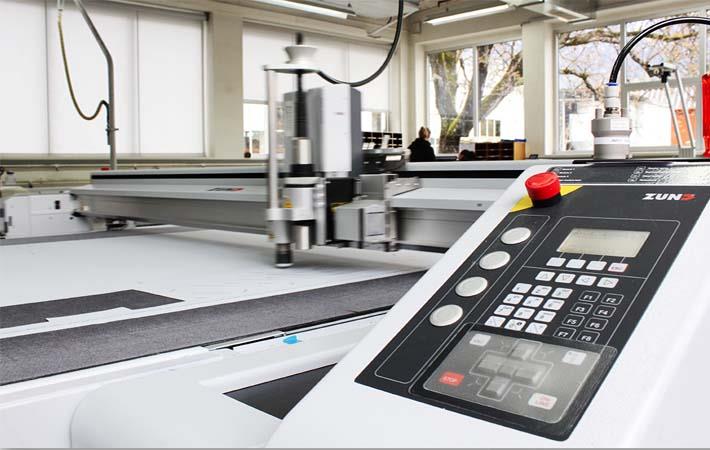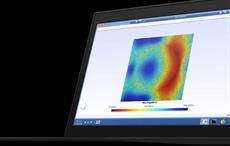Switzerland’s Pilatus Aircraft company has developed the new Pilatus PC-24 business jet with state-of-the-art Zund digital cutting system. Zund is a business engaged in the development, manufacturing, and distribution of multifunctional digital cutters for graphics, packaging, textile and leather industries, as well as in technical textiles and composites.
With a weight of only 5 tons (11,000 lbs), the new Pilatus PC-24 business jet is light enough to take off and land on short, grassy runways. Its low weight stems from the use of components made of carbon and glass fibre. Landing on short, unpaved grass and gravel runways was previously reserved for turboprop airplanes, but as of recently, this type of terrain is no longer off limits to the new PC-24, according to Zund.Switzerland's Pilatus Aircraft company has developed the new Pilatus PC-24 business jet with state-of-the-art Zund digital cutting system. Zund is a business engaged in the development, manufacturing, and distribution of multifunctional digital cutters for graphics, packaging, textile and leather industries, as well as in technical textiles and composites.#
The business aircraft can take off after just 890 metres and requires only 720 metres for landing. This is in part due to its base weight of only 5.3 tons (less than 12,000 lbs) brought about by the numerous carbon and glass-fibre components which make up the PC-24.
The company’s latest aircraft type, the PC-24, consists of innumerable parts, many of them milled at tolerances in the Mμ range. Assembly is much faster now, made possible only because of the latest advances in production technologies. As of this year, the PC-6 is no longer being built, a success story that came to an end after a production run of 500 planes.
At Pilatus no load-bearing parts are made of CFRP, but the company’s R&D is busy working on that. The PC-24 uses composites mainly for interior and exterior cladding. The engine casings and wingtips, too, are made of carbon fibre, as well as landing gear doors, air ducts, various pipes, covers, and trailing edges on wings.
The starting point for these aircraft parts is prepreg, pre-impregnated carbon fibre. Endless, pre-impregnated fibres are consolidated through pressure and high temperature. These prepregs offer high durability and rigidity, are flame retardant, resistant to fatigue and wear as well environmental degradation. Prepreg is delivered in rolls by refrigerated trucks and stored in freezers at -19 degrees C (-2.2 F). To bring the material to room temperature for processing, it is taken out of the cooler the night before. It can remain at room temperature for 5 to 20 days before the resin begins to react and cure.
Today more than half of all CFRP and GFRP components produced in the company’s plastics department are installed in the new PC-24. For cutting prepreg, Pilatus has relied on Zünd digital cutting for more than 15 years. The PN-series cutter purchased at the time continues to reliably perform its duties; however, increased demand for carbon fibre components began to exceed capacity, which led to the addition of a state-of-the-art Zünd G3 L-2500 in 2019. The G3 system single-ply cuts materials for the respective components in a largely automated process and labels cut pieces with an integrated inkjet module.
Once cutting is completed, the parts are kitted and put in cold storage until further processing. Depending on rigidity and strength requirements, a component can consist of up to 350 layers. If no DXF file is available for parts or their individual layers, a digitiser comes into play that allows for easy capture and digitisation of part templates placed on the digitising table. Even minor changes to components previously released by the engineering department can be easily carried out and digitised using this system.
In the meantime, waste rates have been reduced from 30 per cent to 20 per cent. The highly efficient nesting features in Zünd Cut Center - ZCC software play an important role in this. On one hand, cut parts are statically nested, which means parts, or rather their individual layers, are nested to create a set layout used repeatedly to complete the entire job. (GK)
Fibre2Fashion News Desk – India


